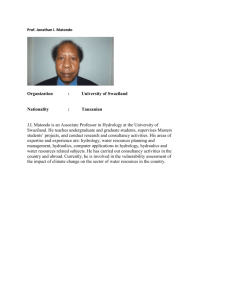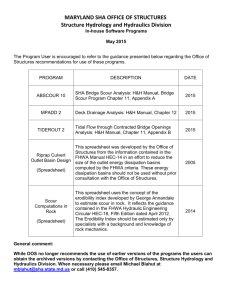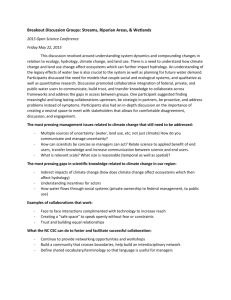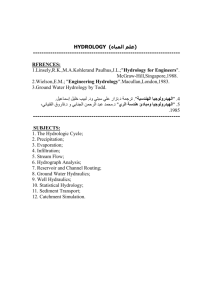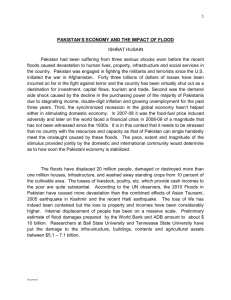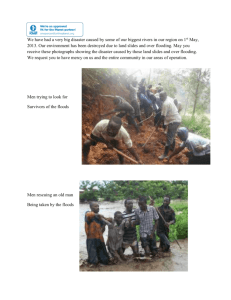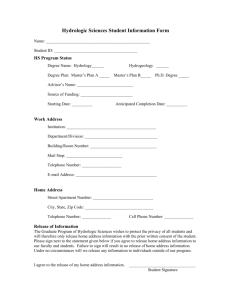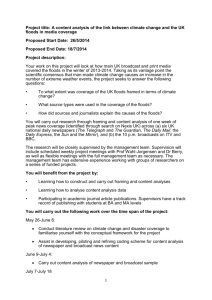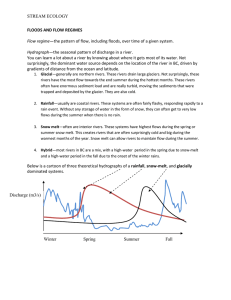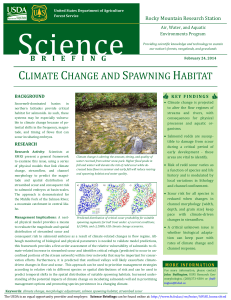684-Keynote-ppt
advertisement
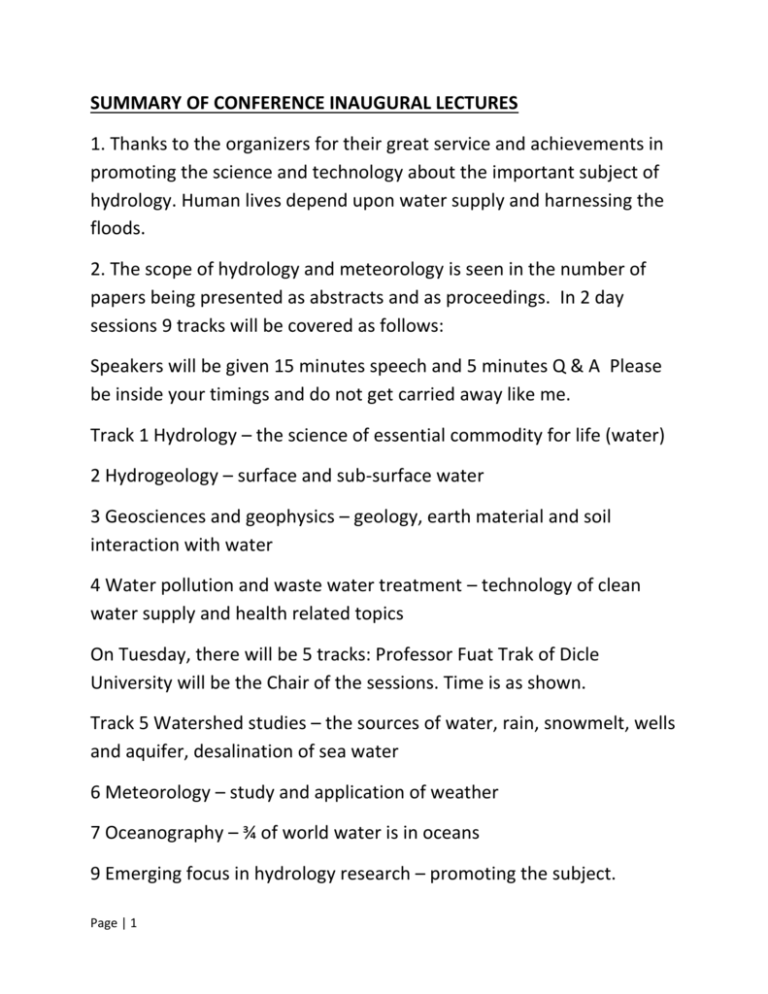
SUMMARY OF CONFERENCE INAUGURAL LECTURES 1. Thanks to the organizers for their great service and achievements in promoting the science and technology about the important subject of hydrology. Human lives depend upon water supply and harnessing the floods. 2. The scope of hydrology and meteorology is seen in the number of papers being presented as abstracts and as proceedings. In 2 day sessions 9 tracks will be covered as follows: Speakers will be given 15 minutes speech and 5 minutes Q & A Please be inside your timings and do not get carried away like me. Track 1 Hydrology – the science of essential commodity for life (water) 2 Hydrogeology – surface and sub-surface water 3 Geosciences and geophysics – geology, earth material and soil interaction with water 4 Water pollution and waste water treatment – technology of clean water supply and health related topics On Tuesday, there will be 5 tracks: Professor Fuat Trak of Dicle University will be the Chair of the sessions. Time is as shown. Track 5 Watershed studies – the sources of water, rain, snowmelt, wells and aquifer, desalination of sea water 6 Meteorology – study and application of weather 7 Oceanography – ¾ of world water is in oceans 9 Emerging focus in hydrology research – promoting the subject. Page | 1 Nature is sometimes unkind to us. Currently, floods in the major rivers in India and Pakistan has taken over 500 lives. In addition there has been a loss to commerce and industry and loss to property has been substantial. It reminds me of the English poet Wordsworth, who said, “Come forth into the light of things, Let nature be your teacher”. We need to learn from the dictatorship, mood and temperament of water kingdom and its nature, for our daily consumption and habits. Sustainability and long life: Both empirical and theoretical mathematical equations have been developed to estimate hydrology, hydraulics and the scour depth as a result of small-scaled model and proto-type/field studies. In Pakistan and India, the pioneer work is attributed to BG Kennedy and Gerald Lacey for the concept of regime channels in the Indo-Gangetic plain. Ganges and Indus Rivers and other major rivers were harnessed for water supply. G Lacey (1929) estimated regime depth of flow in loose bed alluvial rivers/canals and was modified by Inglis (1944) and is known as Lacey– Inglis method. The method is still is an acceptable and recommended for design/estimation of scour depth by the Pakistan railways, Page | 2 India: In June 2013, flash floods and landslides in northern India killed at least 1,000 people in Himalayan state of Uttar Akhand with thousands missing or stranded the toll expected to rise. A river bridge serving both ships for navigation and motor vehicles The world’s water supply is being maintained by the hydrologic cycle. However, the distribution of water is not uniform across the globe. Climate changes can also cause drought conditions or heavy rains and floods. The excess water needs to be disposed of by large scale drainage, before it can cause several types of damages to the continuation of human life, property, agriculture and the cattle. Although floods are considered a natural disaster, the large quantity of water supply from nature can be made beneficial. In countries, where water supply is Page | 3 scarce or there is drought, it can be most beneficial and is considered a gift from God. Developing a Handbook for scour countermeasures design with CITY UNIVERSITY OF NEW YORK Publishing several research papers in journals, conference proceedings and in textbooks Page | 4 Page | 5 Page | 6 Page | 7 100 year flood criteria, or a flood of a lesser interval, that may create the deepest scour at bridge foundations. their repairs and replacement. Lastly, my uncle helped to form Osmania University. He was the principal of Nizam College and Osmania University and I am grateful to the famous All Saints High School for its education. For the recurring losses and sadness, a philosophical approach by the English poet Keats is: “Our sweetest songs are those That tell of the saddest thoughts.” Page | 8
